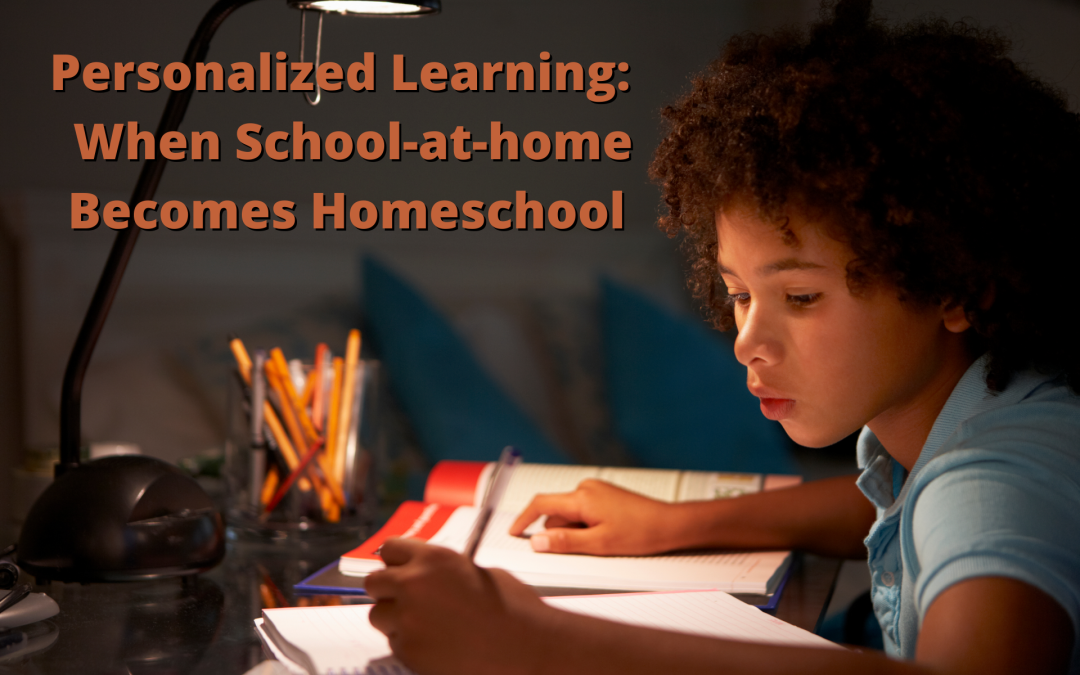THE DILEMMA
One of the primary disadvantages of traditional classroom models is that, with teachers sometimes having to handle 30 or more students per class, kids do not receive the individual attention they need to thrive academically. Students have little or no opportunity to directly communicate with their teachers and, as a result, tend to fall behind in their classes and fail to understand or complete coursework.
Under ideal conditions, home schooling creates an educational atmosphere that is tailor made for one-on-one guidance and interaction with the student. But now that most K to 12 schools have become “home schools,” parents are often faced with having two or more children engaged in at home learning for the foreseeable future. Depending on the laws of individual states*, a growing number of parents have elected to leave the traditional school model all together and create home schools for their children or, sometimes, for a group of children. So how does a parent-now-teacher cope with trying to create personalized learning for more than one child?
THE SOLUTION – 100% ONLINE?
Yes. Parents can choose to enroll their children in an online, full time school. This is one possible homeschooling model. And, yes, many of the same benefits of home schooling also apply to full time online school. Here are five benefits of one-on-one human interaction for home schoolers over a 100% online focus:
1. Although online classes can offer real-time class experience focused on just the registered student, home school provides a personal interaction that cannot be duplicated with an onscreen teacher who has never met or experienced the student in real life.
2. While it is sometimes difficult for a student to adjust to taking guidance from their own parent, when handled effectively, the experience can be enriching in terms of parents learning to listen to their child and the child learning to actively and productively respond to the parent’s guidance.
3. Parents can (and should) encourage their child to learn to communicate what they need and then take control over their own studies. This kind of personalized attention and freedom will engender confidence and guide the child to future success.
4. Whatever else goes on in life, children generally respect and trust their parents. Homeschool provides a totally safe atmosphere where open and productive sharing can occur. Students have “permission” to make mistakes and take risks. Students don’t have to think twice about being themselves.
5. Students don’t have to be afraid to admit they need help and will never be in the position of wondering what the instructor means or wants for any particular assignment. Parents are already adjusted to the student’s communication style (and vice versa) so open communication has a better chance to succeed.
WHAT’S THE DIFFERENCE BETWEEN SCHOOL-AT-HOME AND HOME SCHOOL?
The website www.homeschoolsuperfreak.com is adamant that home school and school-at-home are not one in the same and recommends that “Before you take one more step to transition to homeschooling, you need to know the difference between homeschooling versus school at home because it’s a distinction that will affect how you can and cannot home school your child.”
Parents who are looking for a break from the traditional school experience my not be ready for “virtual school.” Homeschoolsuperfreak.com reminds parents to “Remember: Most virtual schools ARE public school. A student is generally just completing public school work from home. So, some of the same disadvantages (or benefits) that you experience with public schools can also carry over with virtual school.” (NOTE: Also remember that not all virtual schools are public schools. A great example of this fact is the excellent accredited online private school at www.InternationalVLA.com. )
Benefits of home school over virtual school include:
- With virtual school, the student must still manage a regular class schedule. Homeschool allows the in-person benefit of being able to self-manage class time and study time.
- A student can still get behind in schoolwork while attending virtual school. Homeschool provides the flexibility for the student to, in-person, make arrangements to complete work on a more flexible schedule.
- Virtual school often adheres to public school standardized testing requirements. Home schooling provides leeway for in-person evaluation suited to the individual’s learning styles.
In summary, the primary differences between homeschooling and “schooling at home” are:
Homeschooling takes place at home in a learning atmosphere where the parent and the child jointly take control of the child’s education. Learning is parent-and-child-led and is most often done at the child’s pace.
School-at-Home generally follows state-required curriculum requirements. The main difference from actual public school is that the teacher is not available in-person on a one-on-one student/teacher basis. Just as is the case for homeschooling, the student is completing the work from their own home.
SUMMARY
A June 20, 2020 posting to the Amorelicious blog site says it best. The entry is titled Amorelicious|Education|Homeschool Can Offer Children a Personalized Learning Journey.
“In the coming months, homeschooling definitely deserves another chance to prove its biggest merit: A personalized learning journey catered to a child’s specific interests. Sir Ken Robinson, an esteemed author and education expert, believes that the key to educational transformation is ‘not to standardize education, but to personalize it, to build achievement on discovering the individual talents of each child, to put students in an environment where they want to learn and where they can naturally discover their true passions.’ ”
(https://www.amorelicious.com/homeschooling/ )
*For information about individual state homeschool laws visit: www.homeschoolfacts.com .
